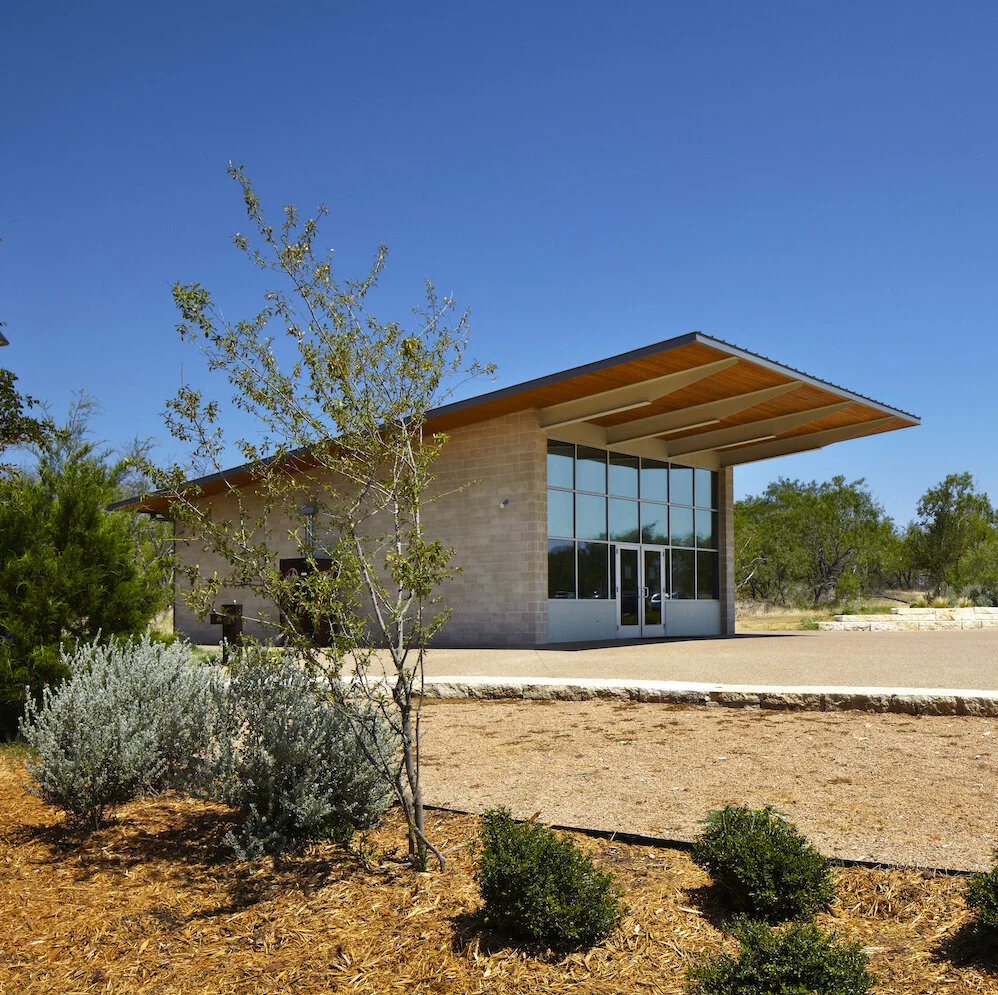Waco Mammoth national monument
CIty of Waco/Baylor University/national park service
Waco, TX
In 1978, an accidental but significant paleontological discovery was made along the Bosque River in Waco, Texas. Research and partial excavations between 1978 and 1997 revealed the site to hold the remains of at least 22 Columbian Mammoths from a single nursery herd, several camels, several giant land turtles and at least two saber tooth cats and other associated paleontological findings. This is the only known site in the world where it is believed that a single herd of mammoths died at the same time from a single flood event, approximately 65,000 years ago.
The original project concept envisioned by the City and Baylor University, was to develop a simple protective shelter over the exposed dig site, to stop ongoing erosion, with a very modest available budget. As the master planning process proceeded, it was soon recognized that the site and its significant resources deserved a much larger program than the original minimal project vision.
The master plan provided project visioning and programming, site planning and design, overall and phased development budgets through a series of facilitated community workshops, stakeholders’ charrettes, as well as fund raising support. An operations and management approach was developed, outlining the program and support features needed to administer and operate the project. The project goals are to preserve and protect the site and its significant resources; provide for the facilitation of continuing research and excavations; promote the understanding and stewardship of the site through interpretive and educational opportunities; provide opportunities for the public to experience, understand and enjoy the site.
The master plan includes: an interpretive, education and research center; excavation site structure; interpretive plaza and exhibits; day use areas; interpretive trails; site restoration, including live oak savannah enhancement; and a Bosque River water taxi stop, roads, parking and utility infrastructure. The master plan set forth a long-term vision with an estimated budget of over 17 million dollars. The master plan and the new larger vision of the Waco Mammoth Center was received with enthusiasm from the City, Baylor University and the Community. \
The City of Waco partnering with the Waco Mammoth Foundation, Baylor University raised funds for the development of the first phase of the project including partial site development, temporary visitor center, dig shelter and site infrastructure. The site opened to the public in 2010.
The National Park Service (NPS) was involved throughout the process, providing paleontological expertise. Through the planning process the NPS interest grew, utilizing the master plan as the guiding document, a NPS Special Resource Study was completed, analyzing the sites potential to become a NPS Park unit.
President Barack Obama issuing a Presidential Proclamation in 2015 making the Waco Mammoth Site a new unit of the National Park System – Waco Mammoth National Monument. At the Dedication on October 5, 2015 attended by former first lady Laura Bush, U.S. Secretary of the Interior Sally Jewell and National Park Service Director Jonathan B. Jarvis, Jewell said: “It’s our duty to protect places like this that will inspire the next generation of archaeologists, paleontologists, and historians, and show the rich diversity of our country’s natural heritage.”
One of the Nation’s newest National Monuments is now managed by the National Park Service in cooperation with the City of Waco and Baylor University. The Vision was achieved.
FiLL p.l.l.c. principal Phil Hendricks Jr. ASLA served as the: principal-in-charge, contract manager, lead planner and landscape architect while at EDAW/AECOM, as a subconsultant to Cotera & Reed Architects.







